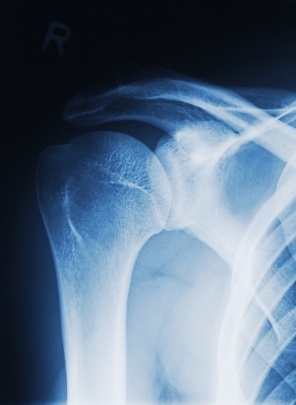|
Shoulder Instability
Shoulder instability encompasses a variety of disorders that are characterised by laxity, subluxation or dislocation of the shoulder joint. Laxity and subluxation denote partial separation of the humeral and scapular articular surfaces whereas dislocation is complete separation of the humeral head from the glenoid cavity. While patients with laxity remain without symptoms, those suffering from subluxation or dislocation are always with pain and decreased range of shoulder joint movements. The incidence of shoulder instability is greater with sportspeople . Sometimes it is severe enough to threaten successful careers. Overall, about 4 to 8 percent of the active population suffers from some form of shoulder instability. The instability of the shoulder is predominantly due to weakening of the soft tissues surrounding the joint. The humeral head and glenoid cavity play no practical role in maintaining stability. The soft tissues lending stability include:
2) Rotator cuff muscles which originate from the scapula and cover the humeral head before getting attached to it 3) Scapular muscles like serratus anterior, latissimus dorsi, rhomboids and teres major and teres minor. 4) The long head of the biceps tendon that gets attached to the superior surface of the glenoid cavity after passing over the head of the humerus 5) The shoulder joint capsule containing the glenohumeral ligaments Depending upon their nature of lending stability to the shoulder joint, these are further divided in to static and dynamic stabilisers. The rotator cuff and the scapular muscles are dynamic stabilisers. The glenoid labrum and the glenohumeral ligaments (superior, middle and inferior) function as static stabilizers. The biceps tendon, though not a static stabilizer, does not act as a “true” dynamic stabilizer as well and consequently occupies a somewhat middle ground. Shoulder instability can be anterior, posterior or multidirectional. Among them, the anterior instability is the commonest type. Anterior instability is very common in young people. The injury predisposing to anterior instability occurs when the shoulder is away from the body at the sides and in external rotation because this is the weakest position of the shoulder and is known as the “classic position” for sustaining an anterior instability. Posterior instability can result from injury, electrocution or an attack of fits. Here the subluxation or dislocation of the humeral head occurs in the posterior direction. Routine x-rays do not reveal the dislocation and hence it can be easily missed in half of the cases when X-rays alone are relied upon. Multidirectional instability is due to shoulder joint capsule laxity from birth onwards. Sometimes it develops secondary to rotator cuff injury and repeated overhead activity. Besides special X-ray views, CT and MRI to arrive at a diagnosis , specific clinical tests are available to elucidate the above instability types. Treatment option for dislocation resulting from shoulder instability involves reduction under sedation or general anesthesia. In recurrent dislocation, arthroscopic or open surgical repair may be considered to minimize the chances of recurrence and to correct the associated defective anatomy contributing to recurrence. Following conservative or surgical correction, the patient is put on a rehabilitation regimen aiming to specifically strengthen the dynamic stabilisers to improve the integrity of the shoulder joint with an eye to prevent future adverse events with the same joint.
|




